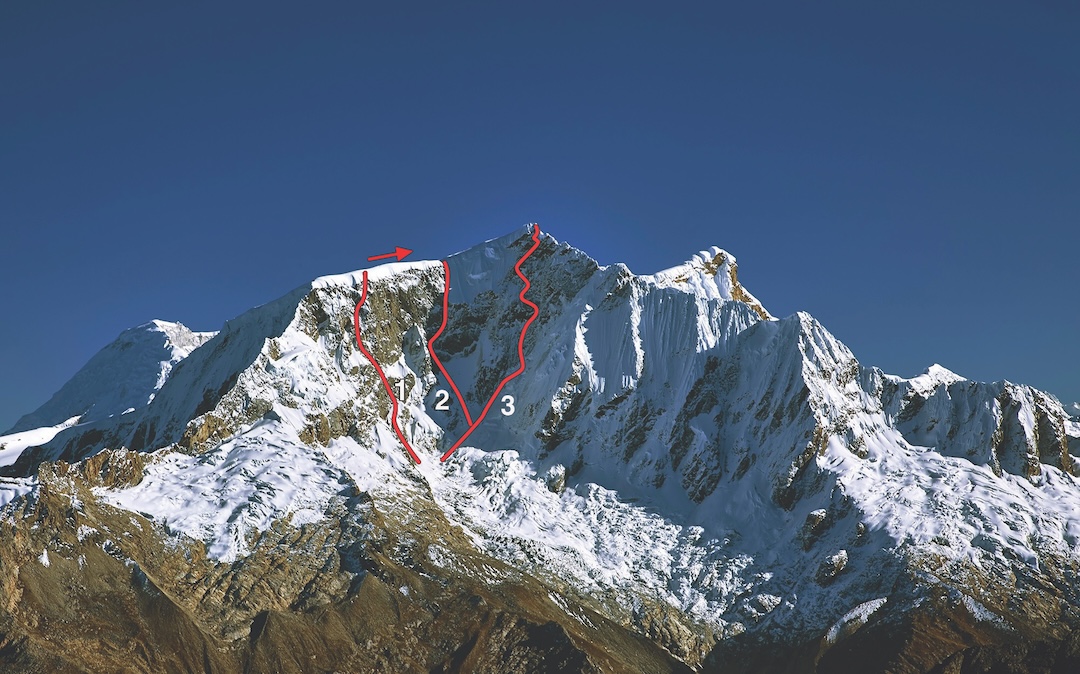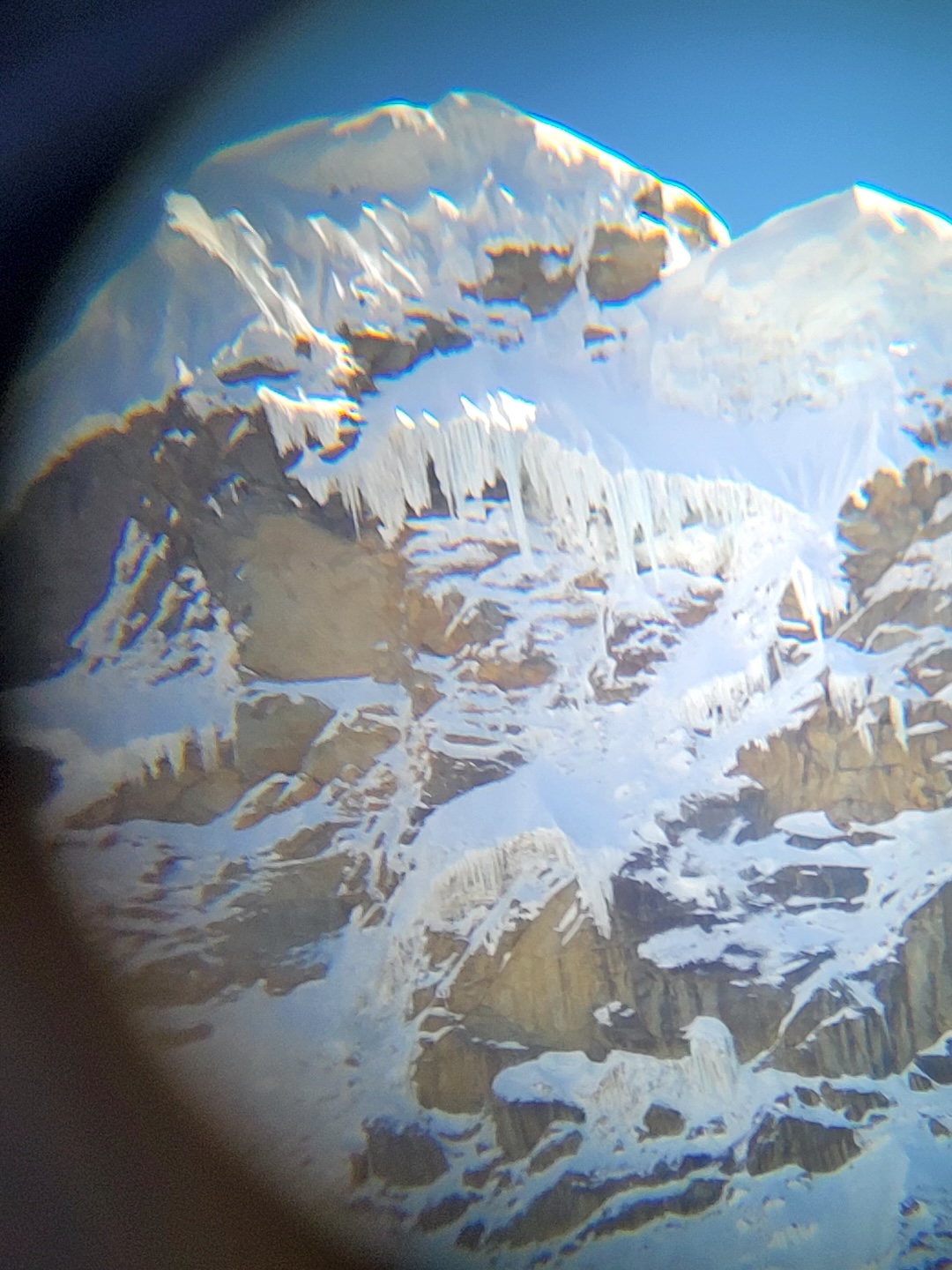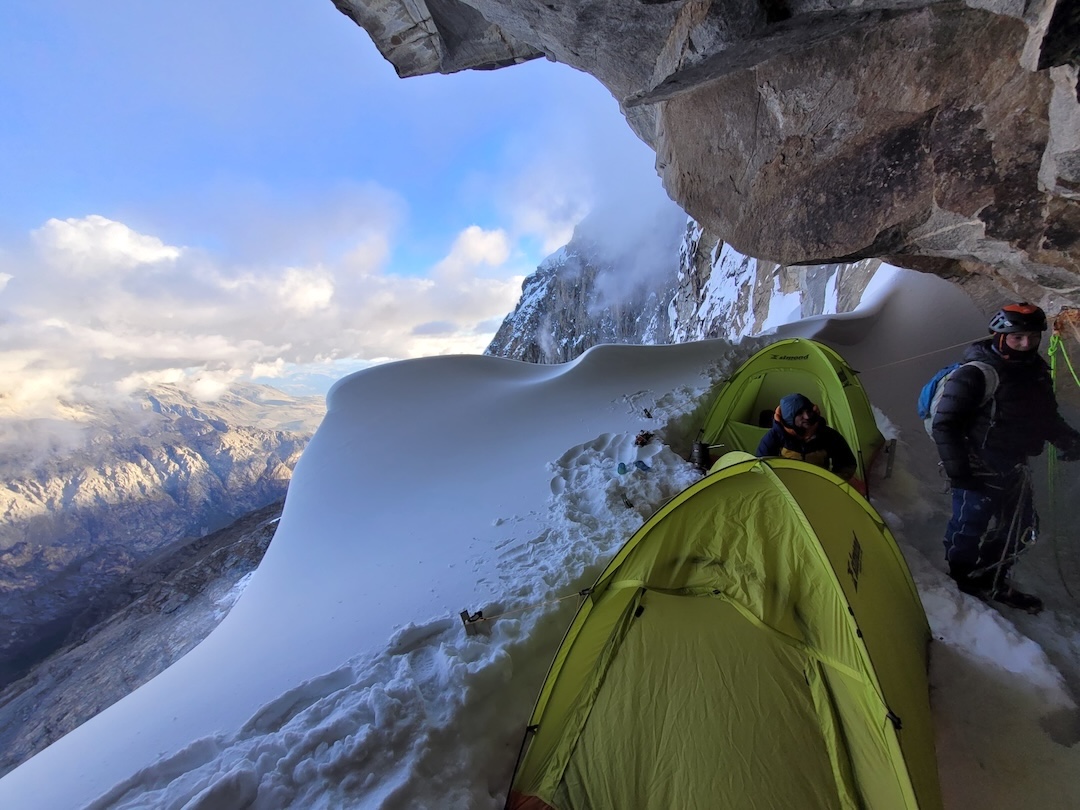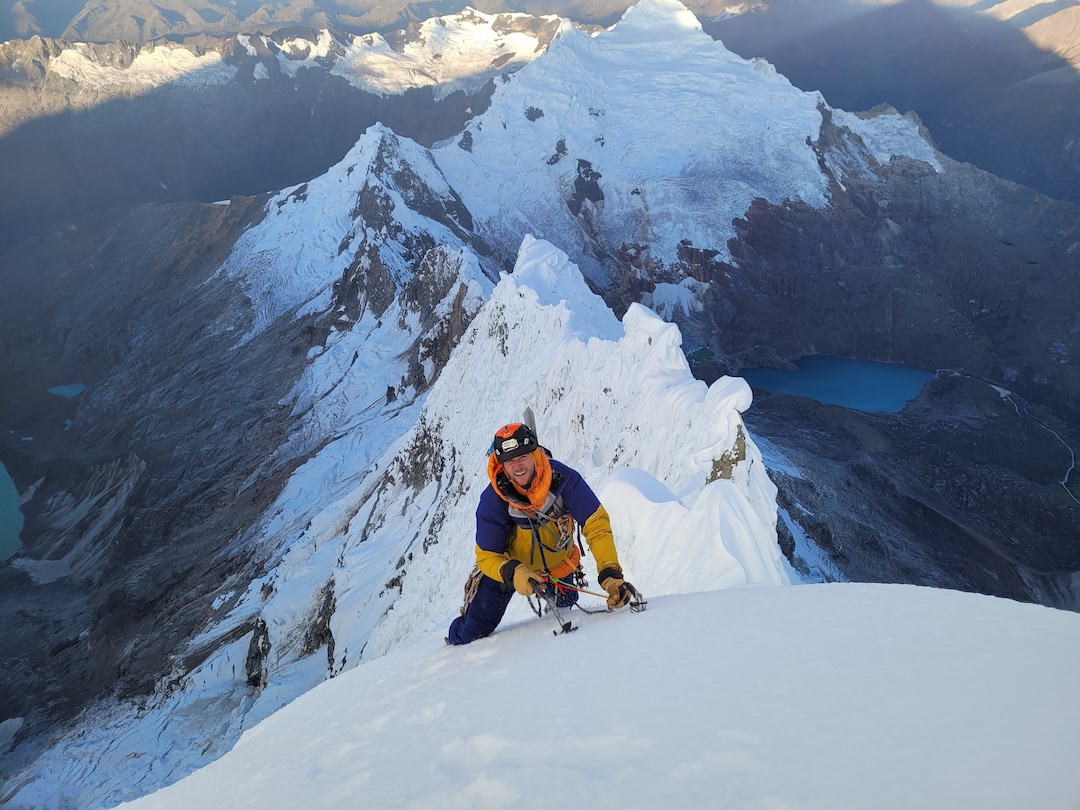Nevado Copa, South Face, A La Sombra de la Duda
Peru, Cordillera Blanca

In May, I was part of a team of young climbers of the French National Alpinism Excellence Group (GEAN) that climbed in Peru. Following an ascent of the south face of Ocshapalca (5,888m), we were acclimatized and had time for another objective. After hours f examining the guidebooks and photos at the Casa de Guías in Huaraz and on the internet, a possibility resurfaced in my memory—the unclimbed direct south face of Nevado Copa (6,188m). In a photo at the Casa de Guías, the south face looked steep, rocky, and glaciated. It seemed hard and technical—maybe too much so. Doubt set in, but the face inspired us.
We headed toward Laguna Paccharuri (a.k.a. Laguna Rocutuyoc) in Quebrada Honda to try to see the route, which is visible from the last bend before the lake. Clouds hung over the peak, but as we arrived, the mountain revealed its southern slopes to us. The face was completely white compared with the photo at the Casa de Guías.
But what was this snow like? Hard or powdery? Would it be an asset or a hindrance? Would we be able to find protection? Could we retreat? We had many questions, but the face had ignited something in us and we had a good feeling.
The south ridge of Nevado Copa, forming the left side of the big south face cirque, was climbed by Fabrizio Manoni, Enrico Rosso, and Miguel Martinez, and César Rosales (AAJ 2004). In 2007, Oriol Baró, Jordi Corominas, and Enrique Muñoz climbed an 800m route up the center of the southeast face; their route, Mostro Africano, gained the ridge atop the wall (ca 6,050m), without going to the summit (see AAJ 2008). A direct route remained to be climbed.
There would be four of us on the attempt: Stéphane Benoist (our GEAN coach), Manuel Bréchignac, Victor Garcin, and myself (Martin de Truchis). We returned to Huaraz after the initial recon, then Stéphane and I headed back up to observe conditions. We set up a camp around 5,100m on a ridge at the top of the valley, and Victor and Manu joined us the next day. We spent two days observing the mountain.
The serac above part of the southeast face, overlooking our objective, was fascinating and terrifying. Farther left, the tops of the chutes caught the sun, and falling stalactites exploded on the rock slabs in the shade below. However, our line appeared calm and peaceful. It did not see the sun, and no blocks of rock or ice seemed to have rolled down the slope. In the middle of the face we saw a dark spot that looked like a cave and might offer a good bivouac site, but how could we be sure?
We left camp on May 22. Three hours of approach separated us from the bergschrund. The glacier wasn’t as terrifying as the huge serac looming above. We wound across the cracked glacier with doubts lingering in our heads: Would the snow on the face be firm enough to climb?
At 6 a.m. we crossed the bergschrund. The first blow of the ice axe was solid, and a feeling of euphoria overcame me. We climbed six or seven steep pitches in snow and ice. Overall, the pitches were similar, some a little steeper than others. It was difficult to find good protection, with very little rock. We reached the tantalizing dark spot in the middle of the face, and I let out a cry of joy, because the bivy was better than a cave—it was a palace! There was room for two or three tents. Manu and Victor fixed two pitches above the bivouac, one of which was very steep (WI5+).
The next day, we left the cave via a short rappel, then ascended the fixed ropes and continued climbing. The following pitches were less steep, but we felt the altitude. By digging through the snow, we managed to find black ice for protection. After a traverse to the right, we were now beneath a huge serac that sits to the right of the summit cornice. I felt like I was in a great mountaineering film as I climbed very steep ice flutes with a wall of ice above me. The four of us met at the foot of the serac, which was so massive that our carefully chosen climbing line—intended to avoid serac fall—had obviously provided only an illusion of security. All we could do was laugh.
We had to choose between exiting to the ridge on the right and going up and left, more directly toward the summit. Manu took over the lead, and I insisted that he go left. A good fight with a pitch of inconsistent snow (85°) and a final passage of M6 that Manu negotiated wonderfully brought us to the summit ridge.
From the top, we descended via the normal route, down the west face. We crossed a flat crevassed area at 5,200m, and a pass to the south led to the Laguna Lejiacocha base camp and our cached gear.
I had been dreaming of this trip for months. I simply wanted to do some great mountaineering and get a change of scenery. But this trip far exceeded expectations. After the doubts we had to overcome, opening a line on an unclimbed face in a much-explored massif, accompanied by people I appreciate and admire, created a memory that will remain engraved in my mind.
We called our route A la Sombra de la Duda (800m, ED WI5+ M6 85° snow). [Other members of the French expedition—Annabelle Bouchardon, Mathieu Détrie, Amaury Fouillade, and Clovis Paulin—repeated the difficult 1982 Fowler-Watts route on the southwest face of Taulliraju (5,830m).]
—Martin de Truchis, France








